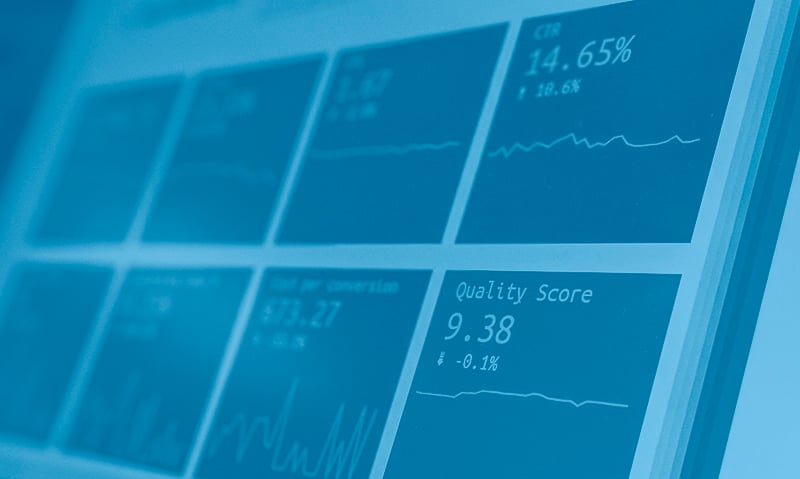Most accommodation businesses use technology to keep up with day to day activity in the hotel. But are they making the most of it?
Today, the success of revenue management in tourist accommodation companies is well known. Everyone uses them, although few really know what they are about. Yet everyone boasts of doing it their own way.

"We bought super modern software from a successful startup that practically gives us everything done," some say. In the market we find multiple revenue management software options. Revenue management is based on a series of algorithms that offer knowledge about the demand that our product will have, and, if the marked competition is the right one and the person who interprets the data knows how to do it, it will allow us to make pricing decisions in the future.
These revenue management softwares have several versions and prices according to the blocks you want to contract. Almost all of them offer the same options:
- Price comparator: allows you to configure a competitive set to know the prices of the competition, date by date and by types of rooms available.
- Online reputation control: stores all customer comments in one place and offers diagrams and graphs with the evolution by periods and by opinion portals. Sometimes they even offer information by department.
- Parity control: sometimes the software includes this option, which searches for the product in all sales channels and informs with notifications if any channel is offering cheaper prices than our website.
- Calendar or hot dates: takes into account the activities and events of the destination to know which days we could offer our product at a higher price and sell it.
All these tools are very useful if you know how to interpret the data. The information offered by a revenue manager can be used to make pricing decisions and set price tactics for the sale of our products in the future. But what do we do after this moment has passed?
Most independent hoteliers, at the end of the season or year, sit down, calculate the total invoicing, pay the outstanding invoices and distribute the results. But do they know where those results come from? Do they have the clear and segregated information to analyse the turnover for that year and be able to make strategic decisions for the following year?
When we make an investment in online marketing we become obsessed with knowing how to calculate the return on investment, we talk to specialists and look for information to compare methods of calculating the return on investment online. Why don't we also worry about calculating the results of this investment when we invest in revenue management software? It is simple, we believe that the result is the money we have left in our pocket at the end of the season once we have paid our collaborators, but we do not analyze it.

Revenue management software facilitates decision making to establish rates based on algorithms to know the situation of demand and competition, but past that moment they are no longer useful to analyze the decisions taken, so we can no longer see the results of these decisions.
That is why it is necessary to take into account the production by distribution channels, to know what percentages of commission we support for each channel, to know how much it costs us to sell the rooms by one channel or another taking into account the showcase effect offered by each channel and what it says about our brand. It is also necessary to know the sales by segments of buyers, not only by the nationality of our clients, but also by typologies according to the reason for their trip, couples, families, business or leisure trips, groups... It is essential to know who our client is and, above all, which client is the most profitable, who pays for the most expensive rooms and who consumes the most extra services apart from the overnight stay. Nor can we fail to analyse sales by type of room, which room is sold the most, which one sells before and how they are sold according to the profile of the client. Perhaps we have products that only one type of customer consumes and we are not getting enough out of them, or we are selling them through the channels that yield less. The customer's purchase method must be taken into account; nowadays customers have many online tools to make comparisons before booking and choose the quickest and simplest forms of purchase. Do we know where sales come from? Do we know the percentage of bookings that come in by phone or overnight stays sold through mobile devices?
All these factors are not analyzed by revenue management software, although they are the analyses we need to know if the work we have done has been successful and can allow us to make strategic decisions for the future, always to maximize the profitability of our sales. If not, what do we work for?
Many will say "we have a PMS (Property Management System) software, an internal hotel management program where all these variables are recorded and serve to analyze all these factors. Are you sure?
Today the market offers countless PMS software offers and most boast a highly developed BI (Business Intelligence) that facilitates the work of managers by providing graphics and analytics on the main KPIs that show the productive and financial evolution of the establishment. In principle it is simple and the hotel chains that have staff and resources to establish and configure all these systems and functions can be established in some way, but what happens in independent hotels with less economic and human resources?
The vast majority of hotels have not even configured a segmentation of their customers. Many only know their nationality, since it is a factor that they are obliged to fill in in order to send travellers' information to the relevant authorities. But have we configured a segmentation according to the motivation of the customer's trip? Are the receptionists adding this information to the PMS once they have checked in and know what segment the customer belongs to? Do we know what channel the bookings were entered into? How many connectors do we have configured in the PMS? Do we have the channels well named? Or do we have duplicates and each receptionist assigns it as he wants? Do we differentiate the direct bookings received via the hotel website from those we have received by phone or email? In many cases, when we extract analytical reports, the "no segment" or "no agency" fields are the ones with the highest percentage. That means we don't know who most of our customers are or where most of our bookings come from.
PMS do not offer revenue management software features, but offer the export to Excel of part of the information recorded in the system, which gives us a large amount of data with numerical reports that, in most cases, do not specify the fields from which the information is extracted. So we have the reports, but do we know how to interpret them? If so, interpreting them involves the laborious task of eliminating columns that are of no use to us, unifying cells that segregate a mass of information and generating graphics faithful enough to the information to be able to draw conclusions.
There are very modern PMS that presume to offer a very developed BI with graphs and statistics to the main work pages to have a clear idea of the evolution of the sales, but they do not even offer comparative data of the production of the previous year for the same dates. Do they really analyze the data that is relevant to us? There are others that are basic, but boast of being perfect for the management of small establishments: "don't pay for software functionalities that your establishment doesn't need," but when it comes to analyzing they don't even offer the average prices of the rooms sold. Are we calling PMS to a program that records reservations and issues invoices?
A good revenue management software must allow you to analyse data from the past, offer statistics and results of the sales channels, types of customers, the prices at which the rooms have been produced, advance reservations by date, percentage of occupations, percentage of cancellations, sales by type of product, production of extra services offered by the establishment... You must be able to analyse these data separately and interlinked with each other in order to know where the income comes from and be able to maximise it, at the same time as we can know which channels or customers are less profitable and which do not interest us. We will know what restrictions we can allow ourselves to put on sale, what packs or services to include in promotions and what services or products cost more to sell and thus be able to analyze them to optimize revenue.
A revenue management software should not only serve to investigate the prices of the competition, know the demand and know our parity of prices online, but it should help us understand the results, know if the decisions taken have been the right ones and should allow us to improve our strategy and tactics to apply for future seasons.
Cristina Fernández | Adviser and Revenue Management Professor at ESHOB



